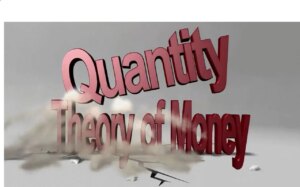Are Central Bankers Missing the Mark? A Deep Dive Into Monetary Policy and Public Confidence

In an age where central banking faces unprecedented challenges, one thing is clear: traditional Keynesian economics may no longer suffice. At Extreme Investor Network, we believe that understanding the systemic limitations of these economic models is vital for navigating the modern financial landscape. Current central bankers are increasingly constrained, partially due to their reliance on outdated doctrines and the incessant influence of mainstream media narratives fueled by ideologically-driven academics.
A Historical Perspective: The Roots of Monetary Theory
To grasp today’s financial complexities, we must delve into the past. Throughout history, dominant economic powers have influenced the nature of money. Ancient coinage exemplified this as empires like Macedonia and Athens issued coins that were not merely transactions tools but symbols of economic strength.

For instance, Philip II of Macedonia, the father of Alexander the Great, saw the Swiss replicate his gold coins, indicating the premium placed on stability and trust in currency. Meanwhile, in ancient Egypt, rather than issuing their own coins, the populace relied on Athenian owls—widely accepted tokens in trade.
The Transition from Coinage to Confidence
As we trace the lineage of monetary systems, we find that public confidence has always been the bedrock of economic stability. This was starkly illustrated in the downfall of the Roman Empire when insecurity shredded public trust in currency. The phenomenon of hoarding in times of uncertainty is nothing new; it dates back centuries and can be linked directly to political instability.

The transition from tangible coinage to abstract money—fiat currency—has introduced complexities that central banks struggle to navigate. As the financial landscape shifts, reliance on outdated Keynesian models fails to address the nuances of public sentiment, which ultimately drives economic activity.
Why Public Confidence Matters
At Extreme Investor Network, we emphasize the critical role of public confidence in shaping economic trajectories. If citizens lack faith in their monetary systems, they will hoard cash rather than spend it, creating a contraction in the economy. The Great Depression serves as a poignant example, where the Federal Reserve made the mistake of contracting the money supply, leading to more severe deflation and economic stagnation.
The Case for New Economic Theories
Today’s economic challenges, particularly after massive quantitative easing (QE), demand a fresh look at economic theory. Central banks have often misinterpreted increases in the money supply as guarantees of growth, failing to recognize that public sentiment is paramount. For instance, during the recent pandemic, despite an influx of monetary supply, public anxiety over future economic stability resulted in unprecedented hoarding behaviors.

The rise of theories like Modern Monetary Theory has emerged in reaction to these challenges, yet they often overlook fundamental psychological aspects of economic behavior. Simply put, the question isn’t about the amount of money supply; it’s about its circulation.
Looking Forward: The Need for Practical Experience in Economics
One of the significant pitfalls in contemporary economics is the gap between theoretical models and real-world trading experiences. This gap has produced economists who formulate policies based solely on models, lacking practical perspectives. It’s akin to asking someone who has never given birth to describe the experience.
Former Federal Reserve Governor Lisa Cook’s recent warning highlighted this issue. She cautioned that overly high valuations in asset classes suggest market fragility—echoing Alan Greenspan’s “irrational exuberance” remarks during the late 90s. Yet, such warnings often fall on deaf ears amid a cacophony of academic noise devoid of practical grounding.

Conclusion: A Call for Realism in Economic Thought
At Extreme Investor Network, we advocate for a renewed focus on public confidence as a core principle of economic theory. The interplay of psychology, market behaviors, and external factors must inform monetary policy, not just antiquated academic perspectives.
As we stand on the brink of potential economic upheaval, the question becomes: How will our central banks adapt and innovate? Without acknowledging the vital role of public confidence, they may find themselves continuing to shoot arrows blindfolded, desperately trying to hit a target that keeps shifting.
Stay tuned to Extreme Investor Network for more insights as we unravel the complexities of modern economics and provide you with the tools to navigate this intricate landscape effectively.

